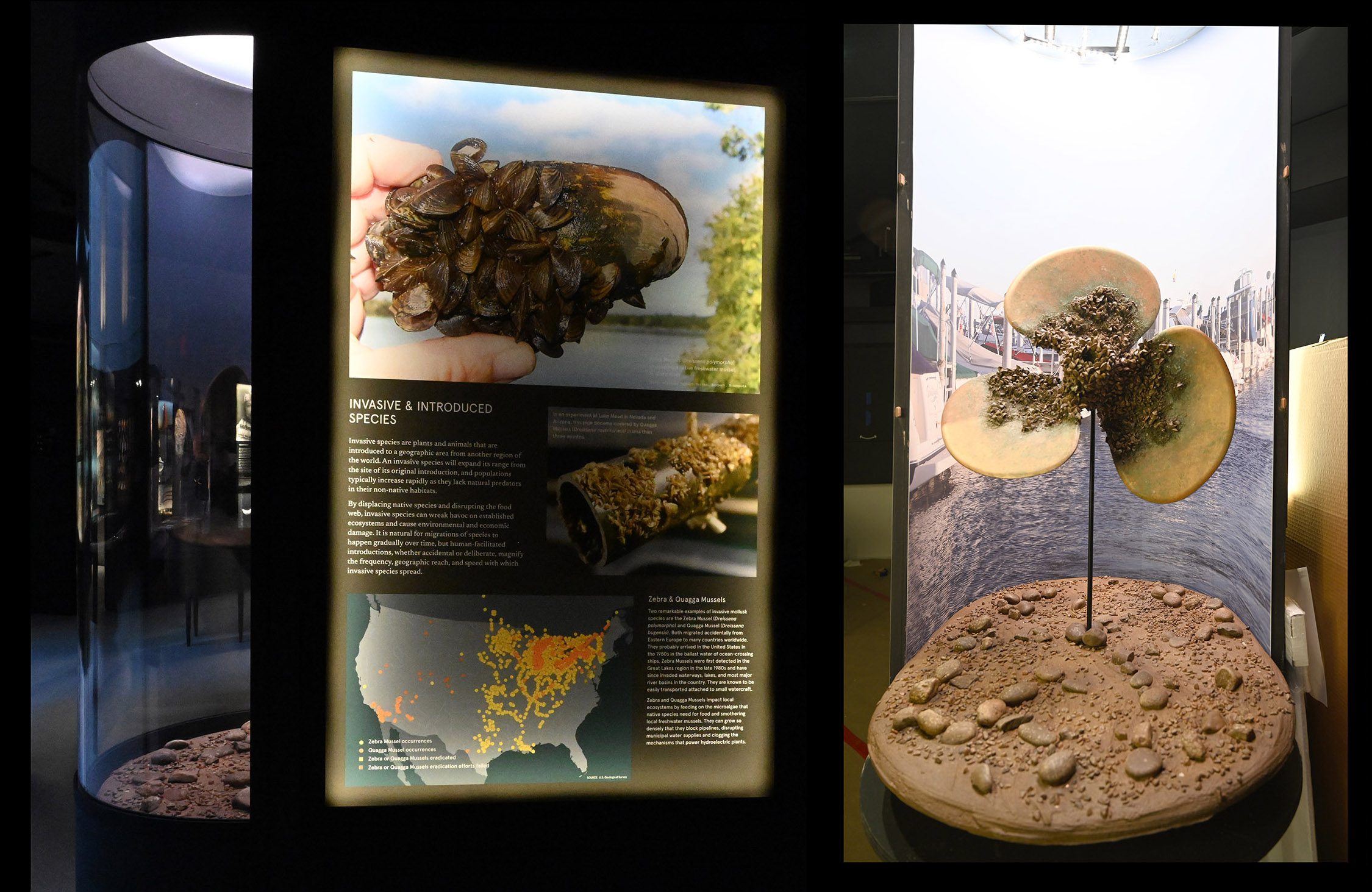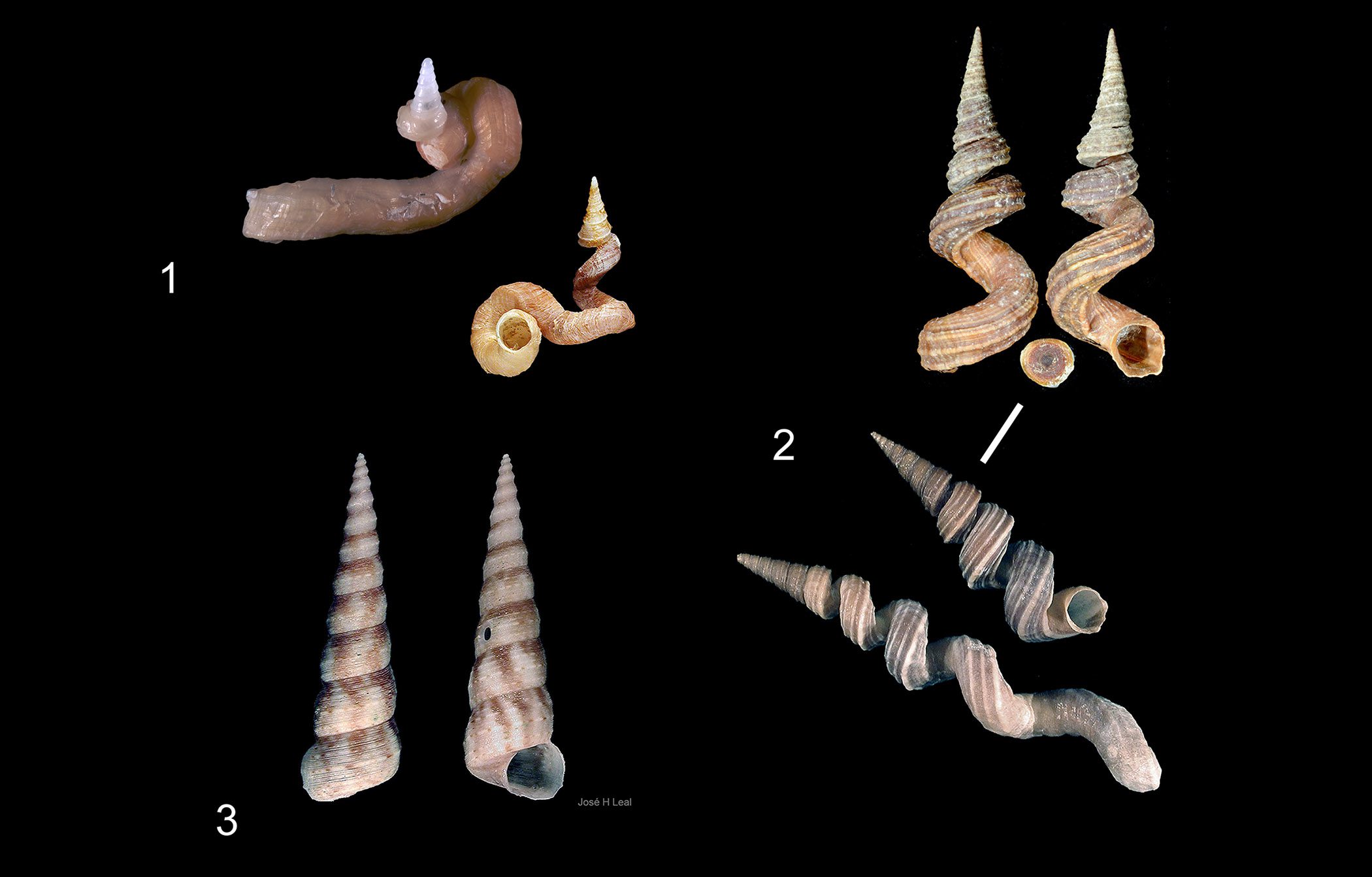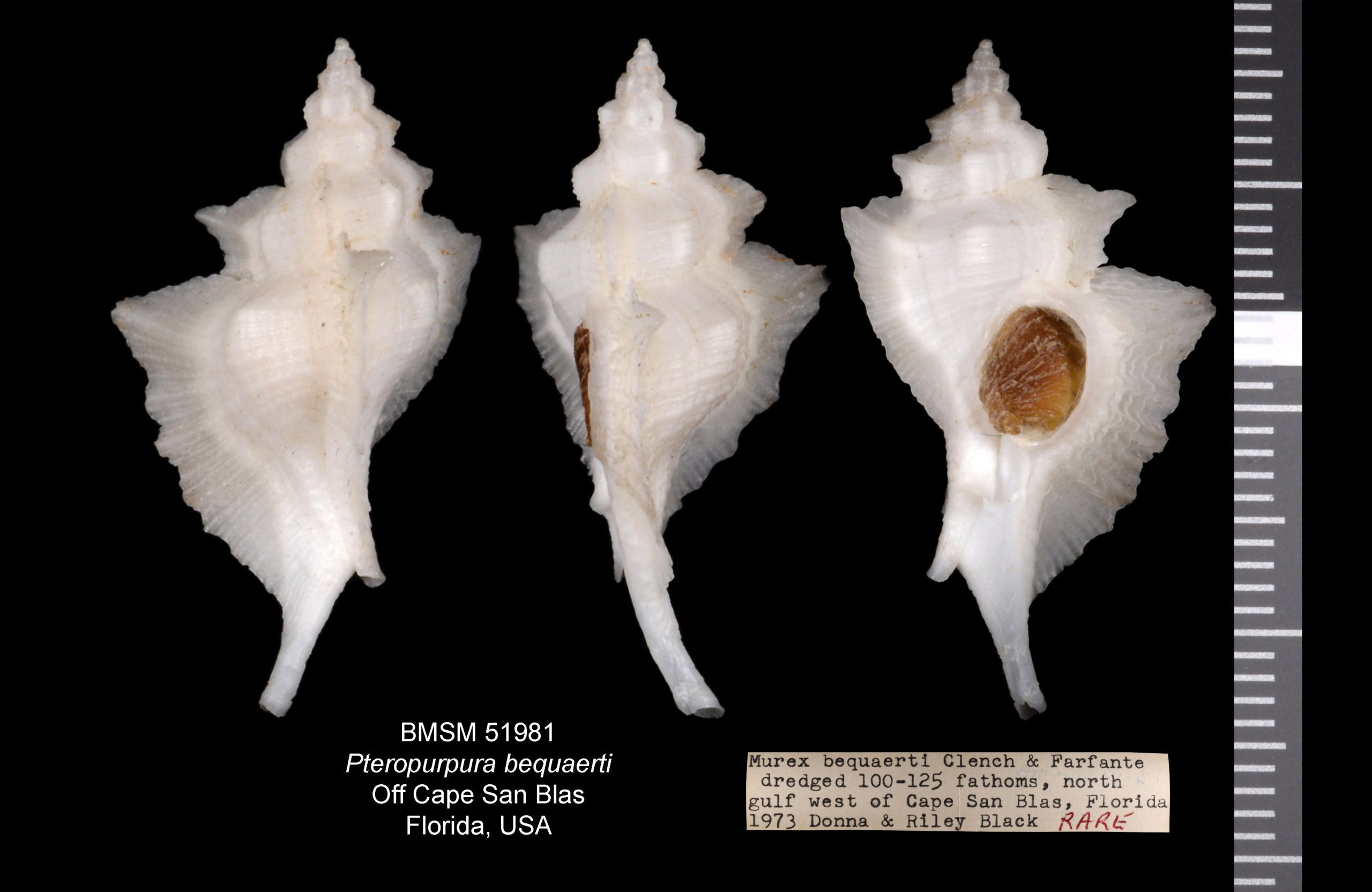For the last few months, internet resources such as iNaturalist, have reported on the presence and relatively quick proliferation of a non-indigenous mollusk, the Thrush Cowrie, (Naria turdus), in the greater Caribbean region.
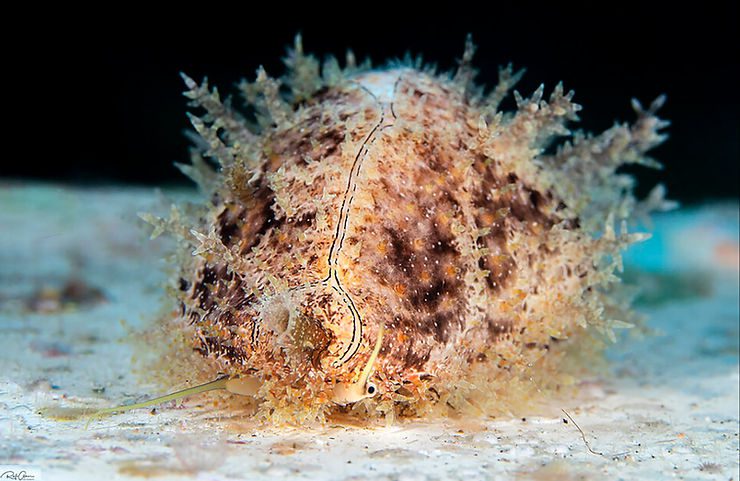 The Thrush Cowrie, Eilat, Gulf of Aqaba, Israel. Photo by Rafi Amar.
The Thrush Cowrie, Eilat, Gulf of Aqaba, Israel. Photo by Rafi Amar.
The Thrush Cowrie reaches about 38 mm (1.5 inches). Its shell color pattern includes brown spots on the lighter-colored background of the dorsal shell surface. The species name turdus means thrush and derives from a perceived similarity between the color pattern of shell and the chest coloration of birds of same name, classified in the genus Turdus, the true thrushes. Apparently, the non-indigenous species was observed in Aruba in 2020 by a local shell collector, and has since then been found in Bonaire*, Venezuela, Costa Rica and, several localities in Puerto Rico.
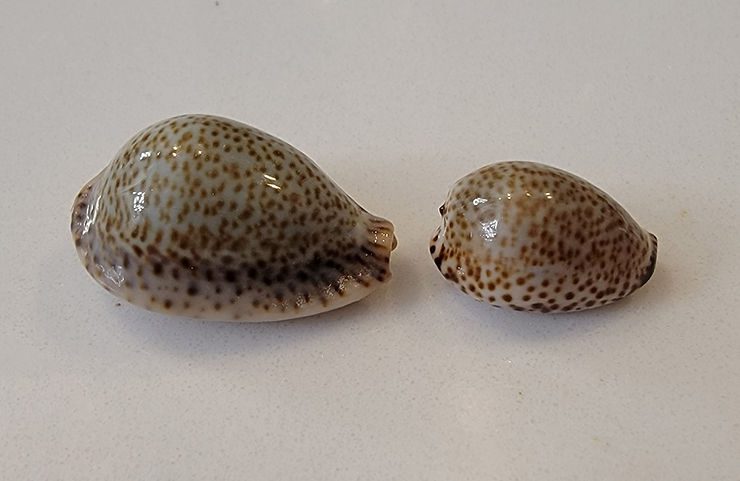 Trush Cowrie shells, from Bonaire. Photo by Phil Gillette.
Trush Cowrie shells, from Bonaire. Photo by Phil Gillette.
Trush Cowries originate from the Indian Ocean and Red Sea, and have migrated in historical times through the Suez Canal to the Mediterranean Sea. We don’t know the exact cause of the recent introduction of the species into the Caribbean region. Species introductions and invasions usually come at a cost for native organisms in the invaded areas, with ecological upheaval caused, for instance, by the lack of predators of the invasive species. The Trush Cowrie’s history of invasions and apparent adaptability makes one wonder where will it show up next.
*This blog entry was prompted by the finding of two Trush Cowrie shells in Bonaire in early April 2022 by Phil Gillette (University of Miami Aplysia Facility) followed by a request from Phil for identification of the species.
